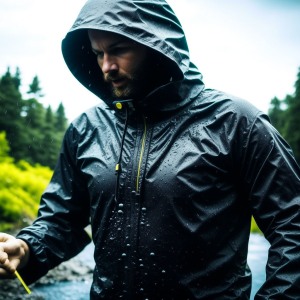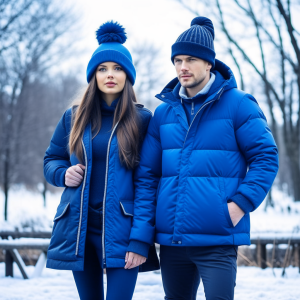Maximize Warmth and Style with Expert Layering Techniques for Cold Weather Attire
As the chill of winter envelops us, the challenge of finding clothing that combines warmth with fashionable appeal becomes essential. The drop in temperatures necessitates layering, but have you ever considered the fundamental principles that make certain layering strategies more effective than others? In this article, we will explore the art and science of layering cold-weather clothing, revealing the critical techniques that elevate your garment choices in the fight against extreme cold, ensuring you not only stay warm but also look stylish while doing so.
Layering isn’t just a fashion trend; it is a strategic method aimed at optimizing heat retention and personal comfort during the winter months. When the temperatures fall, our bodies instinctively try to conserve heat by narrowing blood vessels, which often leads to cold extremities. However, relying solely on this natural response is rarely effective. This is where the thoughtful practice of layering becomes crucial, allowing us to create a robust defense against the cold while maintaining ease of movement and overall comfort.

Establishing Your Base Layer: The Essential Building Block for Winter Warmth
The base layer is the cornerstone of your winter outfit, designed to fit snugly against your skin while providing essential insulation. To fully appreciate the importance of this layer, we must delve into the science of moisture management and how it significantly affects your warmth and comfort during the colder months.
Utilizing Advanced Moisture-Wicking Fabrics for Optimal Comfort
Selecting the right material for your base layer is key to achieving effective moisture management. The importance of moisture-wicking capabilities cannot be overstated. These specially designed fabrics work by drawing moisture away from your skin—whether it’s perspiration or moisture from the environment—preventing it from building up and causing discomfort. A high-quality base layer not only serves as a moisture barrier but also ensures that you remain dry and warm even in challenging weather conditions, greatly enhancing your overall experience of warmth and comfort.
Comparing Insulation Materials: The Benefits of Merino Wool Versus Synthetics
Let’s examine how materials such as merino wool and synthetic fibers can enhance the insulating properties of your base layer. Merino wool is praised for its natural warmth and breathability, making it an excellent choice—it provides effective insulation while efficiently wicking moisture away from the body. On the other hand, synthetic materials like polyester and nylon offer a remarkable balance between durability and insulation, creating a warm microclimate next to your skin that retains body heat effectively, ensuring you stay comfortable even under the most demanding environmental conditions.
Finding the Ideal Fit: Essential Tips for Base Layer Performance
Choosing the correct fit for your base layer goes beyond merely opting for your standard size; it’s crucial for maximizing performance. A snugly fitting base layer ensures constant contact with your skin, thereby enhancing both insulating and moisture-wicking efficiency. Striking the right balance is vital—if it’s too tight, it can restrict movement and comfort, while a loose fit may hinder performance. When considering fit, factor in your activity type and overall layering strategy to guarantee seamless integration with your additional cold-weather garments.
Ultimately, the base layer is far more than just an article of clothing; it acts as a sophisticated moisture-wicking and insulating barrier against the harsh winter air. By understanding the unique properties of materials such as merino wool and synthetic fibers, alongside mastering the fit, you can elevate your base layer from a simple garment to an integral component of your defense against the cold.
Leveraging the Insulating Layer: Your Strategy for Effective Heat Retention
 Moving on to the insulating layer, we focus on its critical role in capturing and retaining heat around your body. This layer is essential in the science of heat retention, acting as a protective cocoon against the harsh elements of winter. We will explore important factors such as warmth-to-weight ratios, the benefits of down insulation, and the eco-friendly advantages of synthetic alternatives.
Moving on to the insulating layer, we focus on its critical role in capturing and retaining heat around your body. This layer is essential in the science of heat retention, acting as a protective cocoon against the harsh elements of winter. We will explore important factors such as warmth-to-weight ratios, the benefits of down insulation, and the eco-friendly advantages of synthetic alternatives.
Grasping Warmth-to-Weight Ratios for Efficient Insulation Choices
Understanding warmth-to-weight ratios is key when selecting an insulating layer. This principle stresses that insulation materials should deliver exceptional warmth without adding unnecessary bulk. Essentially, it’s about maximizing warmth while minimizing weight, allowing for free movement and comfort. This balance is particularly important for individuals who need insulation without feeling encumbered, enabling unrestricted activity in cold climates.
Embracing Down Insulation: The Lightweight Warmth for Adventurers
Down insulation stands out as a top choice for those seeking unparalleled warmth in a lightweight package. Sourced from the soft feathers of ducks and geese, down is famed for its extraordinary warmth-to-weight ratio. Its lightweight and compressible nature makes it an ideal option for winter adventurers who require robust insulation without sacrificing mobility. Recognizing the allure of down insulation is essential to understanding its role in creating an insulating layer that merges warmth, comfort, and flexibility seamlessly.
Selecting Synthetic Insulation: Ethical Choices for All Conditions
Synthetic insulation, primarily made from polyester fibers, has become a popular ethical alternative in the insulation landscape. What sets synthetic insulation apart is its ability to retain warmth even in wet conditions, a scenario where down may falter. This resilience in unpredictable weather makes synthetic fabrics perfect for varying climates. Moreover, choosing synthetic options aligns with ethical considerations, allowing you to enjoy warmth without compromising your values.
Determining Optimal Thickness: Precision in Insulation Selection
Choosing the right thickness for your insulating layer requires careful thought; precision is crucial. Evaluate the expected level of cold exposure along with your layering plan when deciding on thickness. In milder climates, a thinner insulating layer may suffice, while harsher environments may demand a thicker, more robust option. By understanding the nuances of insulation thickness, you can customize your insulating layer to cater to the specific needs of your winter activities.
In conclusion, the insulating layer transcends conventional clothing roles, becoming a strategic ally in the battle against the cold. By mastering the complexities of warmth-to-weight ratios, appreciating the benefits of down insulation alongside synthetic options, and receiving guidance on thickness selection, we can transform the insulating layer into an intentional defense mechanism against winter’s chill.
Your Outermost Layer: The Ultimate Barrier Against Winter’s Harsh Elements
The outermost layer is your vital defense against biting winds and frigid temperatures. This layer serves two main purposes: it protects against environmental elements and significantly aids in moisture management. As we dive deeper into the outer layer, we will highlight the importance of breathability, the transformative advantages of DWR finishes and Gore-Tex membranes, and the essential windproof features that enhance insulation performance.
Breathability: The Key to Comfort and Moisture Control
Frequently underestimated, breathability is a crucial attribute of the outer layer that greatly affects overall comfort. This characteristic refers to the material’s ability to allow sweat vapor to escape from your body while preventing external moisture from entering. Achieving this delicate balance keeps you dry and comfortable, mitigating the chilling effects of trapped moisture. A breathable outer layer is essential for maintaining a cozy microclimate within your clothing, ensuring exceptional comfort during adverse weather conditions.
Understanding DWR Finishes and Gore-Tex: Leaders in Waterproof Technology
 DWR (Durable Water Repellent) coatings and Gore-Tex membranes are at the forefront of cold-weather outerwear technology. DWR finishes give fabrics water-repellent properties, creating an effective barrier against rain, sleet, and snow. Gore-Tex and similar technologies elevate waterproof solutions to new standards by offering an ideal combination of impermeability and breathability. Understanding how these technologies work together is essential for staying dry and comfortable, even in the most severe weather conditions.
DWR (Durable Water Repellent) coatings and Gore-Tex membranes are at the forefront of cold-weather outerwear technology. DWR finishes give fabrics water-repellent properties, creating an effective barrier against rain, sleet, and snow. Gore-Tex and similar technologies elevate waterproof solutions to new standards by offering an ideal combination of impermeability and breathability. Understanding how these technologies work together is essential for staying dry and comfortable, even in the most severe weather conditions.
Windproof Features: Enhancing Protection Against Cold Winds
Windproof features are vital in freezing weather, especially when biting gusts can penetrate even the strongest fabrics. The windproof outer layer acts as an impenetrable barrier against cold air, improving comfort while safeguarding the insulation of the inner layers. By blocking brisk winds, your outer layer becomes a formidable shield, ensuring that your carefully selected layers function together to keep you warm and protected from harsh conditions.
In essence, the outermost layer is more than just a protective shell; it is an advanced barrier that skillfully balances breathability and waterproofing. By recognizing the importance of breathability, exploring the innovations of DWR finishes and Gore-Tex membranes, and understanding the essential role of windproof features, we can elevate the outer layer to a dynamic garment that excels in style, functionality, and resistance to the elements.
Effective Strategies for Achieving Ultimate Warmth and Style This Winter
With a solid grasp of effective layering methods, let’s delve into practical tips and strategies to enhance your cold-weather experience, effortlessly merging warmth with lasting style. Accessories play a crucial role in winter attire, often serving as the unsung heroes that elevate your wardrobe. From the vital warmth offered by well-chosen gloves to the stylish flair of a cozy hat and the comfort of thermal socks, these seemingly minor details are key to achieving a fashionable and comfortable winter look.
The Indispensable Role of Accessories: More Than Just Aesthetic
Accessories are far more than mere embellishments; they are critical components of your defense against the cold. Beyond their visual appeal, items like gloves, hats, and thermal socks perform essential functions in enhancing your overall warmth. By thoughtfully incorporating these accessories, you can ensure that every part of your body is shielded from the chill, effectively preventing precious body heat from escaping into the icy air.
Investing in Quality Accessories: Recommendations for Ultimate Comfort
The quest for warmth extends beyond your base and insulating layers; it also encompasses the careful selection of accessories. Invest in high-quality gloves made from insulating materials such as fleece or lined leather to create a robust barrier against the cold. A warm hat with extra insulation or a cozy faux-fur lining not only looks chic but also aids in retaining body heat. Choose thermal socks made from merino wool or advanced synthetic blends to guarantee maximum warmth and effective moisture management.
Fashionable Tips: Merging Functionality with Style
Staying warm during the winter doesn’t have to compromise your sense of style. Utilize these clever styling techniques to navigate the cold with elegance. Experiment with layering diverse textures in your outfit to create visual interest while enhancing insulation. Select winter-appropriate colors that complement the snowy surroundings, and don’t shy away from accessorizing with bold pieces such as a vibrant scarf or stylish earmuffs to elevate your entire look.
In summary, accessories are the understated architects of a well-rounded winter outfit. They not only enhance warmth but also provide an opportunity to express your personal style, even in the coldest conditions. By selecting high-quality accessories and thoughtfully styling your winter wardrobe, you can expertly master the chill while showcasing undeniable elegance.
Embrace the Perfect Blend of Style and Functionality in Your Winter Wardrobe
As we conclude our exploration of mastering the cold, it’s essential to acknowledge the significance of style in winter clothing. Dressing for the cold doesn’t necessitate sacrificing your fashion sensibilities; today’s fashion landscape celebrates the harmonious integration of functionality and flair. Many outdoor and fashion brands have recognized and embraced the demand for winter gear that not only keeps you warm but also radiates confidence and contemporary elegance.
The Evolution of Cold-Weather Clothing: Entering a Stylish New Era
 The cold-weather clothing industry is experiencing a renaissance, where winter gear transcends mere practicality to become a symbol of innovation and style. Designers and brands are increasingly aware of the need for clothing that seamlessly merges practicality with aesthetic appeal. This transformation has ushered in a new era of outerwear that not only provides warmth but also captivates with its visual charm.
The cold-weather clothing industry is experiencing a renaissance, where winter gear transcends mere practicality to become a symbol of innovation and style. Designers and brands are increasingly aware of the need for clothing that seamlessly merges practicality with aesthetic appeal. This transformation has ushered in a new era of outerwear that not only provides warmth but also captivates with its visual charm.
Pioneering Brands: Fusing Style with Functionality
Several brands are leading this style revolution, skillfully combining fashion and functionality in their winter apparel. Canada Goose is well-known for its luxurious down coats that offer remarkable warmth without sacrificing style. The North Face integrates cutting-edge technology into its designs, providing outerwear that balances chic aesthetics with practical functionality. Meanwhile, Moncler has redefined the puffer jacket, transforming it into a high-fashion statement piece, showcasing that winter clothing can be both functional and runway-ready.
Effective Styling: Elevate Your Winter Fashion Game
Let’s explore how to effectively merge warmth and style in your winter outfits. Opt for standout pieces that fulfill both functional and aesthetic roles, such as a beautifully tailored wool coat or a sleek parka that serves as the centerpiece of your ensemble. Experiment with layering a chunky knit sweater over a fitted jacket for a cozy yet chic look. Don’t hesitate to incorporate vibrant colors into your winter appearance by accessorizing with eye-catching scarves or trendy boots.
Ultimately, embracing style in the cold is no longer a contradiction; it’s a vibrant reality shaped by a dynamic fashion industry. As fashionable cold-weather gear emerges, crafted by innovative brands, the narrative shifts from mere survival to self-expression. So, immerse yourself in this style renaissance, choose pieces that empower you, and redefine fashion boundaries in the wintry embrace of the season.
The post Cold Weather Clothing Layers: The Science Explained appeared first on Survival Bite.
The Article Cold Weather Clothing Layers Explained: Understanding the Science Was Found On https://limitsofstrategy.com


You raise an intriguing point about the intricacies of layering for warmth and style. In my experience, achieving that balance often comes down to the materials used. For instance, merino wool base layers can trap heat more effectively than synthetic options while still being breathable.
You make a really good point about materials; they can really make or break the comfort and effectiveness of an outfit. I’ve found that merino wool is especially interesting because it manages to be lightweight yet incredibly insulating. It’s also amazing how it doesn’t hold odors like some synthetics do, which means it can be worn for days without feeling gross—perfect for outdoor trips or long travels.
You bring up some great observations about merino wool. It’s fascinating how such a natural fiber can strike that balance between warmth and breathability. I find it intriguing that it can manage moisture so well without feeling damp, which is a huge plus when you’re out and about.
It really is fascinating how merino wool manages to perform so well in varying conditions. I’ve had experiences where I was out hiking for hours, and it maintained my body temperature perfectly even when the weather shifted. The moisture-wicking properties are definitely a game changer—it’s remarkable how it can keep you dry while also feeling so lightweight.
Speaking of balancing comfort and performance, I recently came across some insights on choosing the right shoes for pickleball that really highlight the importance of support and breathability on the court.
‘Xero Shoes for Pickleball: Best Choices to Enhance Your Play’
https://lvabj.org/xero-shoes-for-pickleball-best-choices-to-enhance-your-play/.
You’ve hit the nail on the head with your thoughts on merino wool. It really is a versatile fabric that seems to excel in so many situations. I appreciate how lightweight it is, which lets you layer without feeling bulky—a big plus when you’re out and about. It’s interesting to think about how materials can impact not just comfort, but also our mobility and enjoyment during activities.
Your exploration of layering techniques really resonates with me, especially as someone who often finds winter styling challenging. I’ve noticed that the combination of materials plays a significant role in both warmth and style. For instance, pairing a lightweight merino wool base layer with a stylish down vest not only traps heat effectively but also adds that visual interest often lost in bulkier options.
I completely relate to the challenges of winter styling. It can feel like a delicate balance—finding that sweet spot where you’re warm, but also not looking like you’ve just stepped out of a marshmallow factory. Your mention of combining materials, like a merino wool base layer with a down vest, really highlights how thoughtful layering can elevate a look while keeping us cozy.
I totally understand that struggle with winter styling—it really can be an art form in itself. Finding that balance between warmth and looking put-together is key. I’ve found that experimenting with textures can make a huge difference; mixing heavier fabrics with lighter ones often gives the outfit that stylish edge while still keeping me cozy.
Your exploration of layering techniques not only addresses the practicalities of staying warm in winter but also resonates deeply with the emotional aspect of dressing for the season. I’ve always found that the garments we choose in colder months can significantly impact our mood and sense of well-being. There’s something empowering about curating a stylish layered outfit that keeps the cold at bay, serving as both a protective barrier and a canvas for personal expression.